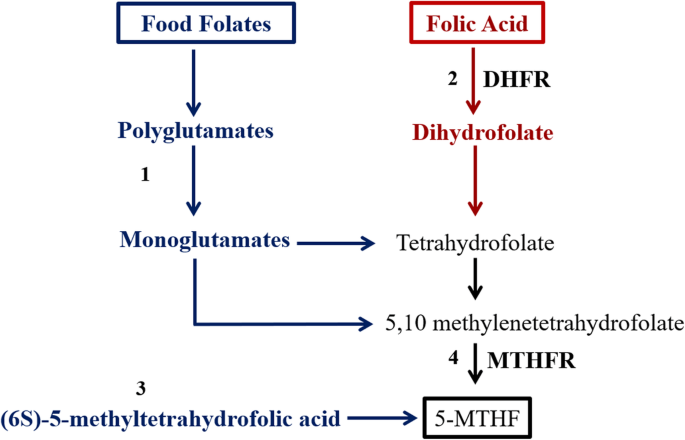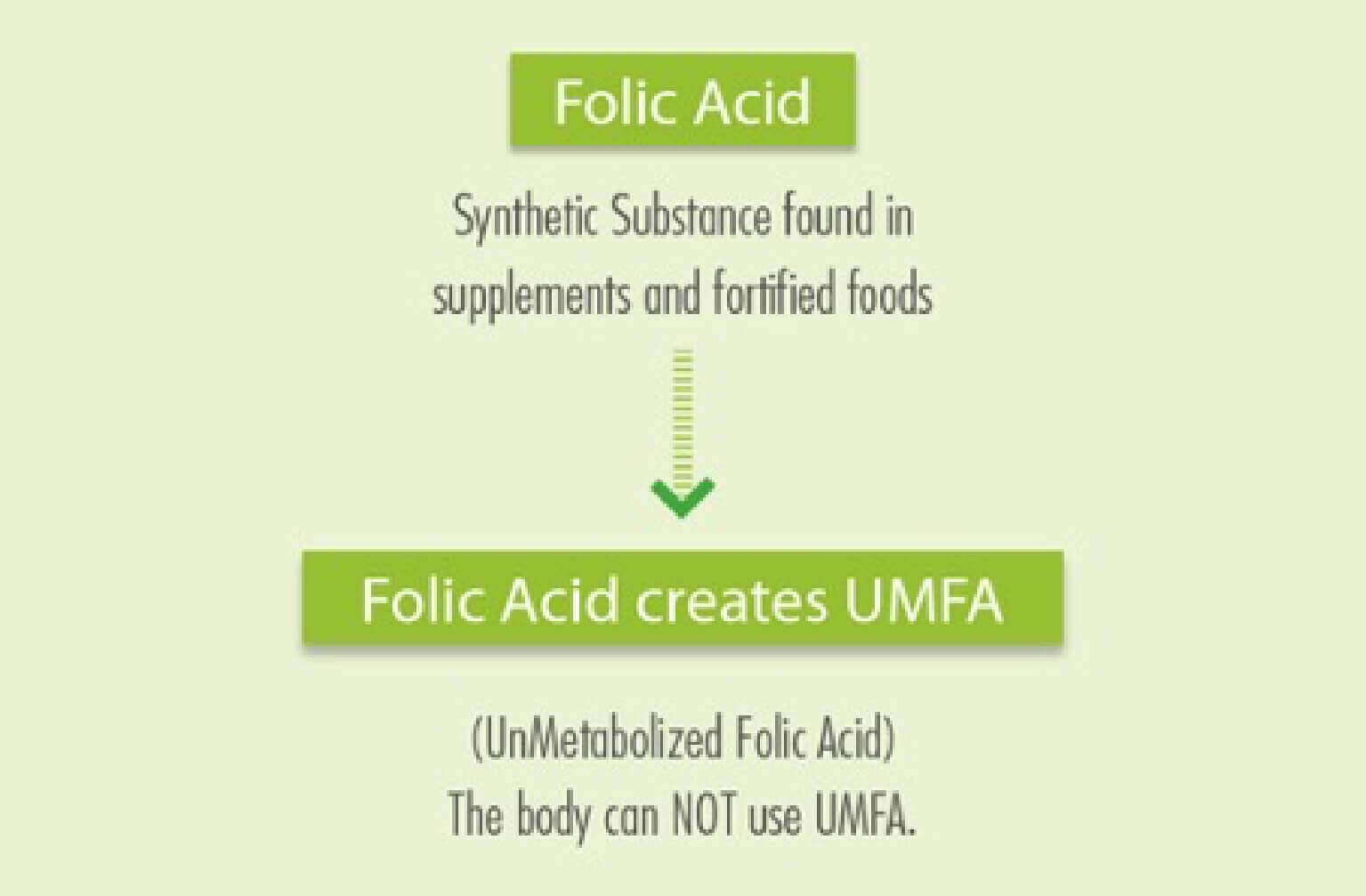
Folic acid (also known as B9), is a water-soluble synthetic vitamin; a counterpart of the naturally occurring form (known as folate) found in leafy green vegetables, citrus fruits, meat, and poultry (Lee & Chan, 2011; Tomita, 2016). Such a vitamin is key for the normal functioning of red blood cells (RBCs), the adequate synthesis of purines and pyrimidines (a component of DNA), and the synthesis of certain amino acids (Pagana & Pagana, 2014). However, supplemental folic acid in excess (as with other vitamins) have the potential to produce unfavorable side-affects. The following will explore the same.

Folic acid must pass through particular biochemical steps in order for said vitamin to be used by the body in an effective fashion (Bailey et al., 2010). Specifically, folic acid must be converted by dihydrofolate reductase (an enzyme) to dihydrofolate to tetrahydrofolate; the same form of folate naturally found in food sources (Bailey et al., 2010). However, aberrations can occur the processing of folic acid, which causes a buildup of folic acid; a condition known as unmetabolized serum folic acid (UMFA) (Bailey et al., 2010). The following will consider the potential side-affects from UFMA.

Bailey et al. (2010) suggested that UFMA was detected in 38% of the population, which may be partly due to the folic acid fortification (i.e., cereals, grains, milk). Interestingly, UFMA does not occur from naturally occurring folate sources (i.e., leafy green vegetables, citrus fruits), indicating the need to consider and monitor consumption of synthetic sources of folate, to include direct supplementation and fortified foods (Bailey et al., 2010). Such analysis might be relevant as UMFA has been suggested to facilitate the growth of particular forms of cancer. However, other research has shown no correlations (Rees et al., 2017; Tomita, 2016). In essence, controversy exists regarding the role that folic UFMA may play in cancer growth.
In conclusion, 38% of the population exhibits UFMA (Bailey et al., 2010). Although research is controversial regarding the relationship to cancer development, a simple approach to manage UFMA might be to consume natural sources of folate, as said sources do not accumulate in the blood.
References
Bailey, R. L., Mills, J. L., Yetley, E. A., Gahche, J. J., Pfeiffer, C. M., Dwyer, J. T., … Picciano, M. F. (2010). Unmetabolized serum folic acid and its relation to folic acid intake from diet and supplements in a nationally representative sample of adults aged ≥ 60 y in the United States. American Journal of Clinical Nutrition, 92(2), 383-389.
Lee, J. E., & Chan, A. T. (2011). Fruits, vegetables, and folate: Cultivating the evidence for cancer prevention. Gastroenterology, 141(1), 16-19.
Pagana, K. D., & Pagana, T. J. (2014). Manual of diagnostic and laboratory tests (5thed.). St. Louis, MO: Mosby.
Rees, J. R., Morris, C. B., Peacock, J. L., Ueland, P. M., Barry, E., L., McKeown-Eyssen, G. E., … Baron, J. A. (2017). Unmetabolized folic acid, tetrahydrofolate, and colorectal adenoma risk. Cancer Prevention Research, 10(8), 451-458.
Tomita, L. Y. (2016). Folate and cancer: Is there any association? Journal of Inborn Errors of Metabolism, 4, 1-7.
-Michael McIsaac
